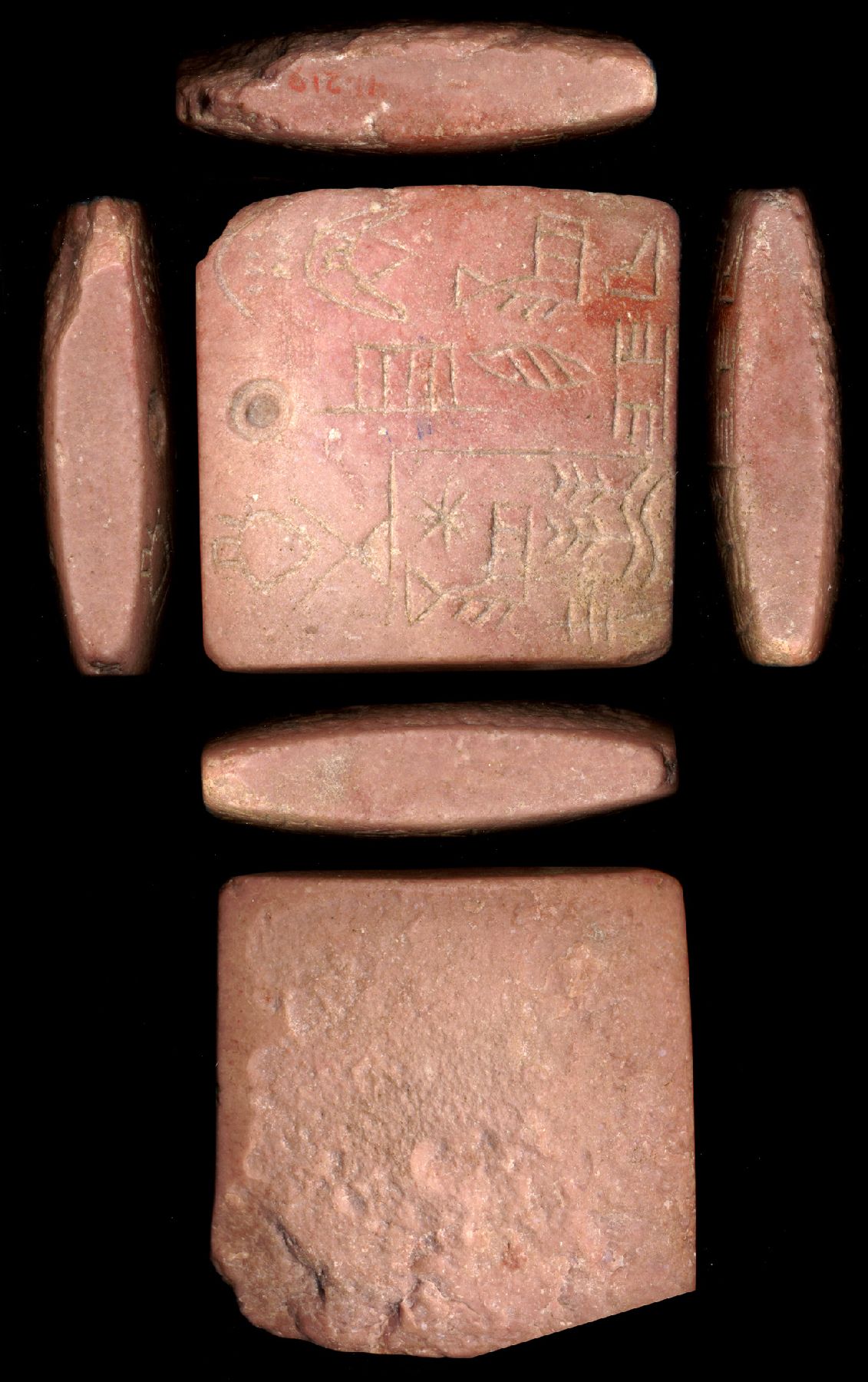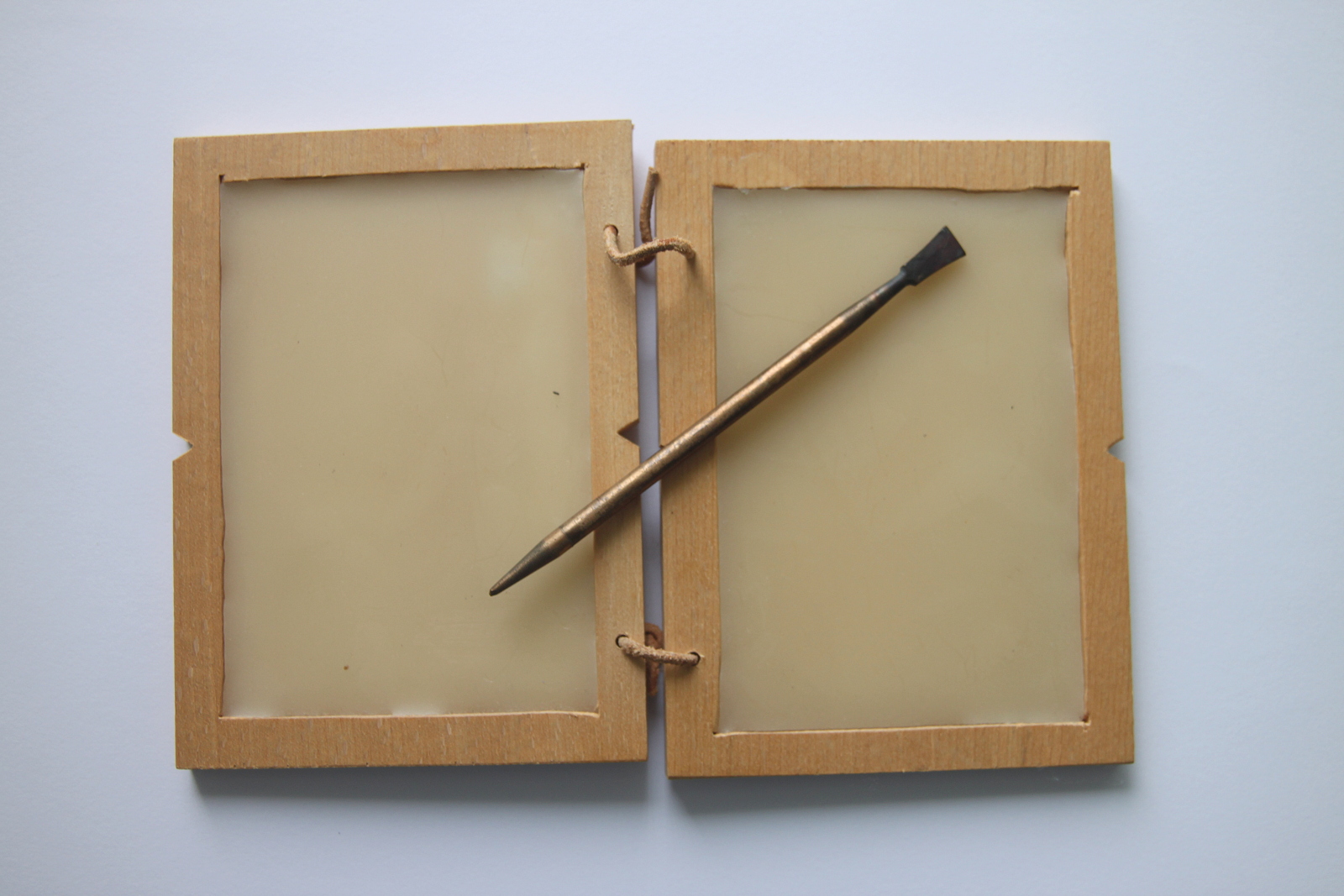|
Music Of Mesopotamia
Music was ubiquitous throughout Mesopotamian history, playing important roles in both religious and secular contexts. Mesopotamia is of particular interest to scholars because evidence from the region—which includes artifacts, artistic depictions, and written records—places it among the earliest well-documented cultures in the history of music. The discovery of a bone wind instrument dating to the 5th millennium BCE provides the earliest evidence of music culture in Mesopotamia; depictions of music and musicians appear in the 4th millennium BCE; and later, in the city of Uruk, the pictograms for ‘harp’ and ‘musician’ are present among the earliest known examples of writing. Music played a central role in Mesopotamian religion and some instruments themselves were regarded as minor deities and given proper names, such as Ninigizibara. Its use in secular occasions included festivals, warfare, and funerals—among all classes of society. Mesopotamians sang and playe ... [...More Info...] [...Related Items...] OR: [Wikipedia] [Google] [Baidu] |
Ur Lyre
Ur ( or ) was an important Sumerian city-state in ancient Mesopotamia, located at the site of modern Tell el-Muqayyar () in Dhi Qar Governorate, southern Iraq. Although Ur was once a coastal city near the mouth of the Euphrates on the Persian Gulf, the coastline has shifted and the city is now well inland, on the south bank of the Euphrates, southwest of Nasiriyah in modern-day Iraq. The city dates from the Ubaid period , and is recorded in written history as a city-state from the 26th century BC, its first recorded king being King Tuttues. The city's patron deity was Nanna (in Akkadian, Sin), the Sumerian and Akkadian moon god, and the name of the city is in origin derived from the god's name, UNUGKI, literally "the abode (UNUG) of Nanna". The site is marked by the partially restored ruins of the Ziggurat of Ur, which contained the shrine of Nanna, excavated in the 1930s. The temple was built in the 21st century BC (short chronology), during the reign of Ur-Nammu and ... [...More Info...] [...Related Items...] OR: [Wikipedia] [Google] [Baidu] |
Hurrian Songs
The Hurrian songs (or Hurrian Hymns) are a collection of music inscribed in cuneiform on clay tablets excavated from the ancient Amorite-Canaanite city of Ugarit, a headland in northern Syria, which date to approximately 1400 BC.Marguerite Yon, The City of Ugarit at Tell Ras Shamra' (Winona Lake, IN: Eisenbrauns, 2006): 24. (179 pages) One of these tablets, which is nearly complete, contains the Hurrian Hymn to Nikkal (also known as the Hurrian cult hymn or "a zaluzi-prayer to the gods," or simply "h.6"), making it the oldest surviving substantially complete work of notated music in the world. While the composers' names of some of the fragmentary pieces are known, h.6 is an anonymous work. History The complete song is one of about 36 such hymns in cuneiform writing, found on fragments of clay tablets excavated in the 1950s from the Royal Palace at Ugarit (present-day Ras Shamra, Syria), in a stratum dating from the fourteenth century BC, but is the only one surviving in sub ... [...More Info...] [...Related Items...] OR: [Wikipedia] [Google] [Baidu] |
Sumerian Language
Sumerian ) was the language of ancient Sumer. It is one of the List of languages by first written account, oldest attested languages, dating back to at least 2900 BC. It is a local language isolate that was spoken in ancient Mesopotamia, in the area that is modern-day Iraq, Iraq. Akkadian language, Akkadian, a Semitic languages, Semitic language, gradually replaced Sumerian as the primary spoken language in the area (the exact date is debated), but Sumerian continued to be used as a sacred, ceremonial, literary, and scientific language in Akkadian-speaking Mesopotamian states, such as Assyria and Babylonia, until the 1st century AD. Thereafter, it seems to have fallen into obscurity until the 19th century, when Assyriologists began Decipherment, deciphering the cuneiform inscriptions and excavated tablets that had been left by its speakers. In spite of its extinction, Sumerian exerted a significant influence on the languages of the area. The Cuneiform, cuneiform script, original ... [...More Info...] [...Related Items...] OR: [Wikipedia] [Google] [Baidu] |
Old Babylonian Empire
The Old Babylonian Empire, or First Babylonian Empire, is dated to , and comes after the end of Sumerian power with the destruction of the Third Dynasty of Ur, and the subsequent Isin-Larsa period. The chronology of the first dynasty of Babylonia is debated; there is a Babylonian King List A and also a Babylonian King List B, with generally longer regnal lengths. In this chronology, the regnal years of List A are used due to their wide usage. Hardship of searching for origins of the First Dynasty The origins of the First Babylonian dynasty are hard to pinpoint because Babylon itself yields few archaeological materials intact due to a high water table. The evidence that survived throughout the years includes written records such as royal and votive inscriptions, literary texts, and lists of year-names. The minimal amount of evidence in economic and legal documents makes it difficult to illustrate the economic and social history of the First Babylonian Dynasty, but with historica ... [...More Info...] [...Related Items...] OR: [Wikipedia] [Google] [Baidu] |
God Ea, Also Enki, Holding A Cup With Overflowing Water
In monotheistic belief systems, God is usually viewed as the supreme being, creator deity, creator, and principal object of Faith#Religious faith, faith. In polytheistic belief systems, a Deity, god is "a spirit or being believed to have created, or for controlling some part of the universe or life, for which such a deity is often worshipped". Belief in the existence of at least one deity, which interfers with the world, is called theism. Conceptions of God vary considerably. Many notable theologians and philosophers have developed arguments for and against the existence of God. Atheism rejects the belief in any deity. Agnosticism is the belief that the existence of God is unknown or unknowable. Some theists view knowledge concerning God as derived from faith. God is often conceived as the greatest entity in existence. God is often believed to be the cause of all things and so is seen as the creator, God the Sustainer, sustainer, and ruler of the universe. God is often thought ... [...More Info...] [...Related Items...] OR: [Wikipedia] [Google] [Baidu] |
Cuneiform
Cuneiform is a Logogram, logo-Syllabary, syllabic writing system that was used to write several languages of the Ancient Near East. The script was in active use from the early Bronze Age until the beginning of the Common Era. Cuneiform scripts are marked by and named for the characteristic wedge-shaped impressions (Latin: ) which form their Grapheme, signs. Cuneiform is the History of writing#Inventions of writing, earliest known writing system and was originally developed to write the Sumerian language of southern Mesopotamia (modern Iraq). Over the course of its history, cuneiform was adapted to write a number of languages in addition to Sumerian. Akkadian language, Akkadian texts are attested from the 24th century BC onward and make up the bulk of the cuneiform record. Akkadian cuneiform was itself adapted to write the Hittite language in the early second millennium BC. The other languages with significant cuneiform Text corpus, corpora are Eblaite language, Eblaite, Elamit ... [...More Info...] [...Related Items...] OR: [Wikipedia] [Google] [Baidu] |
Stylus
A stylus is a writing utensil or tool for scribing or marking into softer materials. Different styluses were used to write in cuneiform by pressing into wet clay, and to scribe or carve into a wax tablet. Very hard styluses are also used to Engraving, engrave metal, and the slate and stylus system is used to punch out dots to write in Braille. Styluses are held in the hand and thus are usually a narrow elongated shape, similar to a modern ballpoint pen. Many styluses are heavily curved to be held more easily. The word ''stylus'' is also used to describe Stylus (computing), computer styluses used to assist in navigating or providing more precision when using touchscreens. Etymology ''Stylus'' comes from the Latin —the spelling ''stylus'' arose from an erroneous connection with Greek (), 'pillar'.''Oxford Latin Dictionary'', s.v. "stilus" (2012). The Latin word had several meanings, including "a long, sharply pointed piece of metal; the stem of a plant; a pointed instrume ... [...More Info...] [...Related Items...] OR: [Wikipedia] [Google] [Baidu] |
Scribes
A scribe is a person who serves as a professional copyist, especially one who made copies of manuscripts before the invention of automatic printing. The work of scribes can involve copying manuscripts and other texts as well as secretarial and administrative duties such as the taking of dictation and keeping of business, judicial, and historical records for kings, nobles, temples, and cities. The profession of scribe first appears in Mesopotamia. Scribes contributed in fundamental ways to ancient and medieval cultures, including Egypt, China, India, Persia, the Roman Empire, and medieval Europe. Judaism, Buddhism, and Islam have important scribal traditions. Scribes have been essential in these cultures for the preservation of legal codes, religious texts, and artistic and didactic literature. In some cultures, social functions of the scribe and of the calligrapher overlap, but the emphasis in scribal writing is on exactitude, whereas calligraphy aims to express the aesthetic ... [...More Info...] [...Related Items...] OR: [Wikipedia] [Google] [Baidu] |
Mediterranean Coast
The Mediterranean Sea ( ) is a sea connected to the Atlantic Ocean, surrounded by the Mediterranean basin and almost completely enclosed by land: on the east by the Levant in West Asia, on the north by Anatolia in West Asia and Southern Europe, on the south by North Africa, and on the west almost by the Morocco–Spain border. The Mediterranean Sea covers an area of about , representing 0.7% of the global ocean surface, but its connection to the Atlantic via the Strait of Gibraltar—the narrow strait that connects the Atlantic Ocean to the Mediterranean Sea and separates the Iberian Peninsula in Europe from Morocco in Africa—is only wide. Geological evidence indicates that around 5.9 million years ago, the Mediterranean was cut off from the Atlantic and was partly or completely desiccated over a period of some 600,000 years during the Messinian salinity crisis before being refilled by the Zanclean flood about 5.3 million years ago. The sea was an important route for ... [...More Info...] [...Related Items...] OR: [Wikipedia] [Google] [Baidu] |
West Africa
West Africa, also known as Western Africa, is the westernmost region of Africa. The United Nations geoscheme for Africa#Western Africa, United Nations defines Western Africa as the 16 countries of Benin, Burkina Faso, Cape Verde, The Gambia, Ghana, Guinea, Guinea-Bissau, Ivory Coast, Liberia, Mali, Mauritania, Niger, Nigeria, Senegal, Sierra Leone, and Togo, as well as Saint Helena, Ascension and Tristan da Cunha (United Kingdom Overseas Territories, United Kingdom Overseas Territory).Paul R. Masson, Catherine Anne Pattillo, "Monetary union in West Africa (ECOWAS): is it desirable and how could it be achieved?" (Introduction). International Monetary Fund, 2001. The population of West Africa is estimated at around million people as of , and at 381,981,000 as of 2017, of which 189,672,000 were female and 192,309,000 male.United Nations Department of Economic and Social Affairs, Population Division (2017). World Population Prospects: The 2017 Revision, custom data acquired via webs ... [...More Info...] [...Related Items...] OR: [Wikipedia] [Google] [Baidu] |
East Africa
East Africa, also known as Eastern Africa or the East of Africa, is a region at the eastern edge of the Africa, African continent, distinguished by its unique geographical, historical, and cultural landscape. Defined in varying scopes, the region is recognized in the United Nations Statistics Division United Nations geoscheme for Africa, scheme as encompassing 18 sovereign states and 4 territories. It includes the Horn of Africa to the North and Southeastern Africa to the south. Definitions In a narrow sense, particularly in English-speaking contexts, East Africa refers to the area comprising Kenya, Tanzania, and Uganda, largely due to their shared history under the Omani Empire and as parts of the British East Africa Protectorate and German East Africa. Further extending East Africa's definition, the Horn of Africa—comprising Djibouti, Eritrea, Ethiopia, and Somalia—stands out as a distinct geopolitical entity within East Africa.Robert Stock, ''Africa South of the Sahara, ... [...More Info...] [...Related Items...] OR: [Wikipedia] [Google] [Baidu] |
Ancient Egypt
Ancient Egypt () was a cradle of civilization concentrated along the lower reaches of the Nile River in Northeast Africa. It emerged from prehistoric Egypt around 3150BC (according to conventional Egyptian chronology), when Upper and Lower Egypt were amalgamated by Menes, who is believed by the majority of List of Egyptologists, Egyptologists to have been the same person as Narmer. The history of ancient Egypt unfolded as a series of stable kingdoms interspersed by the "Periodization of ancient Egypt, Intermediate Periods" of relative instability. These stable kingdoms existed in one of three periods: the Old Kingdom of Egypt, Old Kingdom of the Early Bronze Age; the Middle Kingdom of Egypt, Middle Kingdom of the Middle Bronze Age; or the New Kingdom of Egypt, New Kingdom of the Late Bronze Age. The pinnacle of ancient Egyptian power was achieved during the New Kingdom, which extended its rule to much of Nubia and a considerable portion of the Levant. After this period, Egypt ... [...More Info...] [...Related Items...] OR: [Wikipedia] [Google] [Baidu] |











